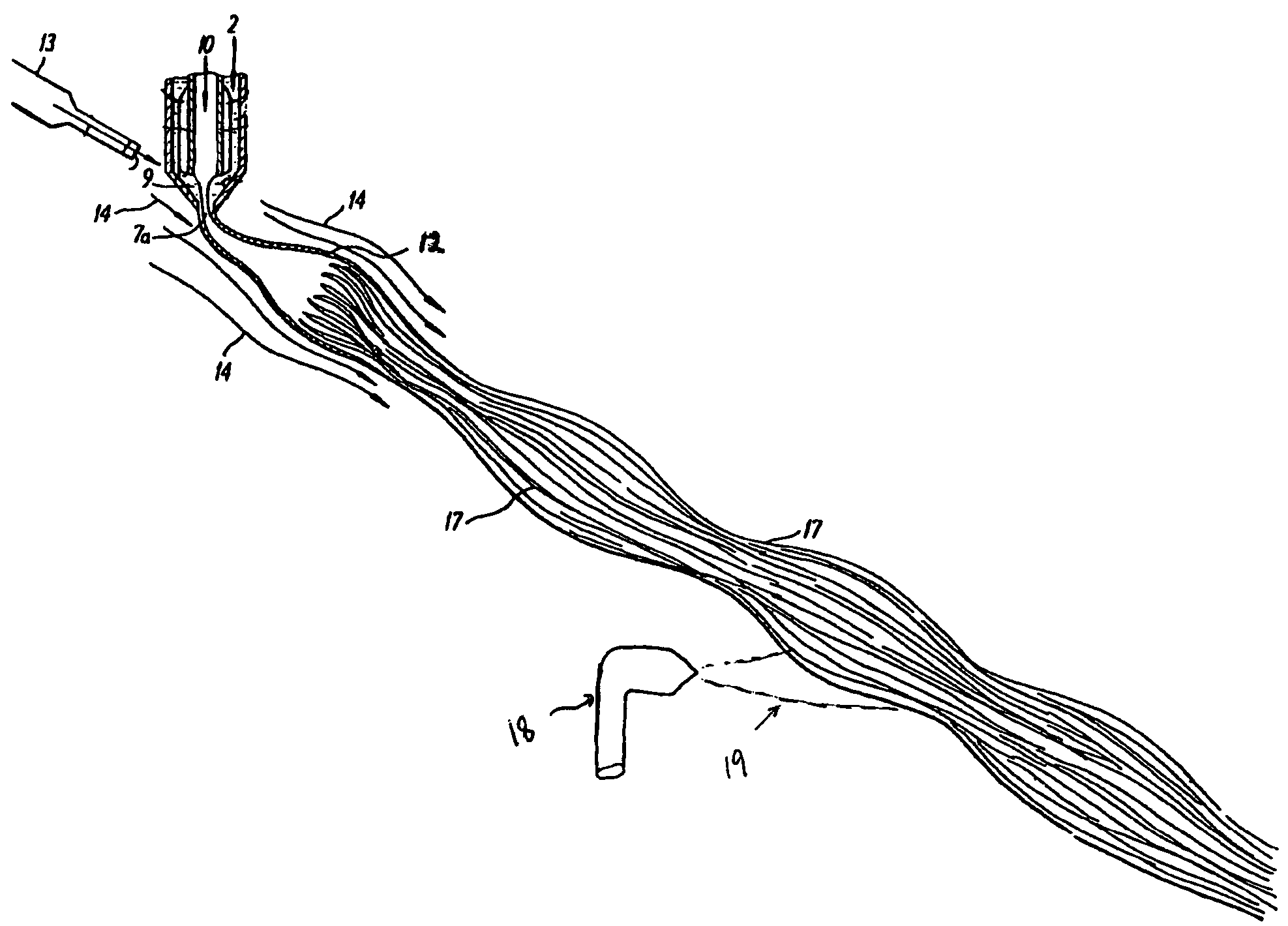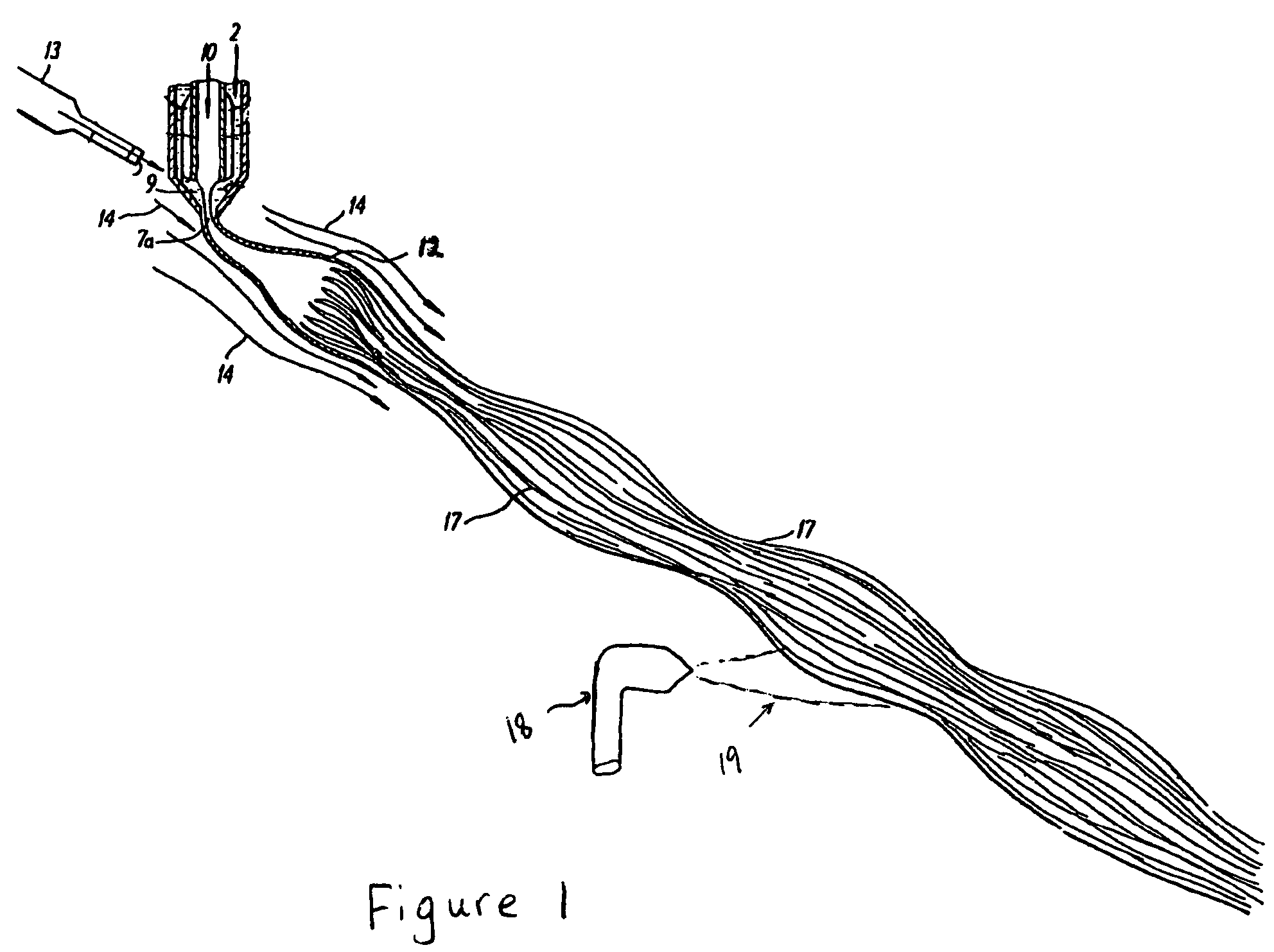Coated nanofiber webs
a nanofiber and coating technology, applied in the direction of weaving, synthetic resin layered products, raw material division, etc., can solve the problems of inability to provide fine fiber web functionality, limitation of fine fiber functionality, and inability to make webs with coated nanofibers
- Summary
- Abstract
- Description
- Claims
- Application Information
AI Technical Summary
Benefits of technology
Problems solved by technology
Method used
Image
Examples
Embodiment Construction
[0013]The present invention relates to articles made from fibers, particularly coated fibers. The fibers are produced from one or more thermoplastic polymers. Nonlimiting examples of thermoplastic polymers suitable for the present invention include polyolefins, polyesters, polyamides, polystyrenes, polyurethanes, biodegradable polymers including starch compositions, PHA, PLA, and combinations thereof. The homopolymer, copolymers, and blends thereof are included within this description. The most preferred polymers are polyolefins such as polypropylene, polyethylene, nylons, and polyethylene terephthalate.
[0014]Suitable thermoplastic polymers include any polymer suitable for melt spinning. The rheological properties of the polymer must be such that the polymer can be melt extruded and is able to form a film. The melting temperature of the polymer is generally from about 25° C. to 400° C. The polymers of the present invention as they are present in the die may have a melt flow rate of ...
PUM
| Property | Measurement | Unit |
|---|---|---|
| diameter | aaaaa | aaaaa |
| diameters | aaaaa | aaaaa |
| diameter | aaaaa | aaaaa |
Abstract
Description
Claims
Application Information
 Login to View More
Login to View More - R&D
- Intellectual Property
- Life Sciences
- Materials
- Tech Scout
- Unparalleled Data Quality
- Higher Quality Content
- 60% Fewer Hallucinations
Browse by: Latest US Patents, China's latest patents, Technical Efficacy Thesaurus, Application Domain, Technology Topic, Popular Technical Reports.
© 2025 PatSnap. All rights reserved.Legal|Privacy policy|Modern Slavery Act Transparency Statement|Sitemap|About US| Contact US: help@patsnap.com


